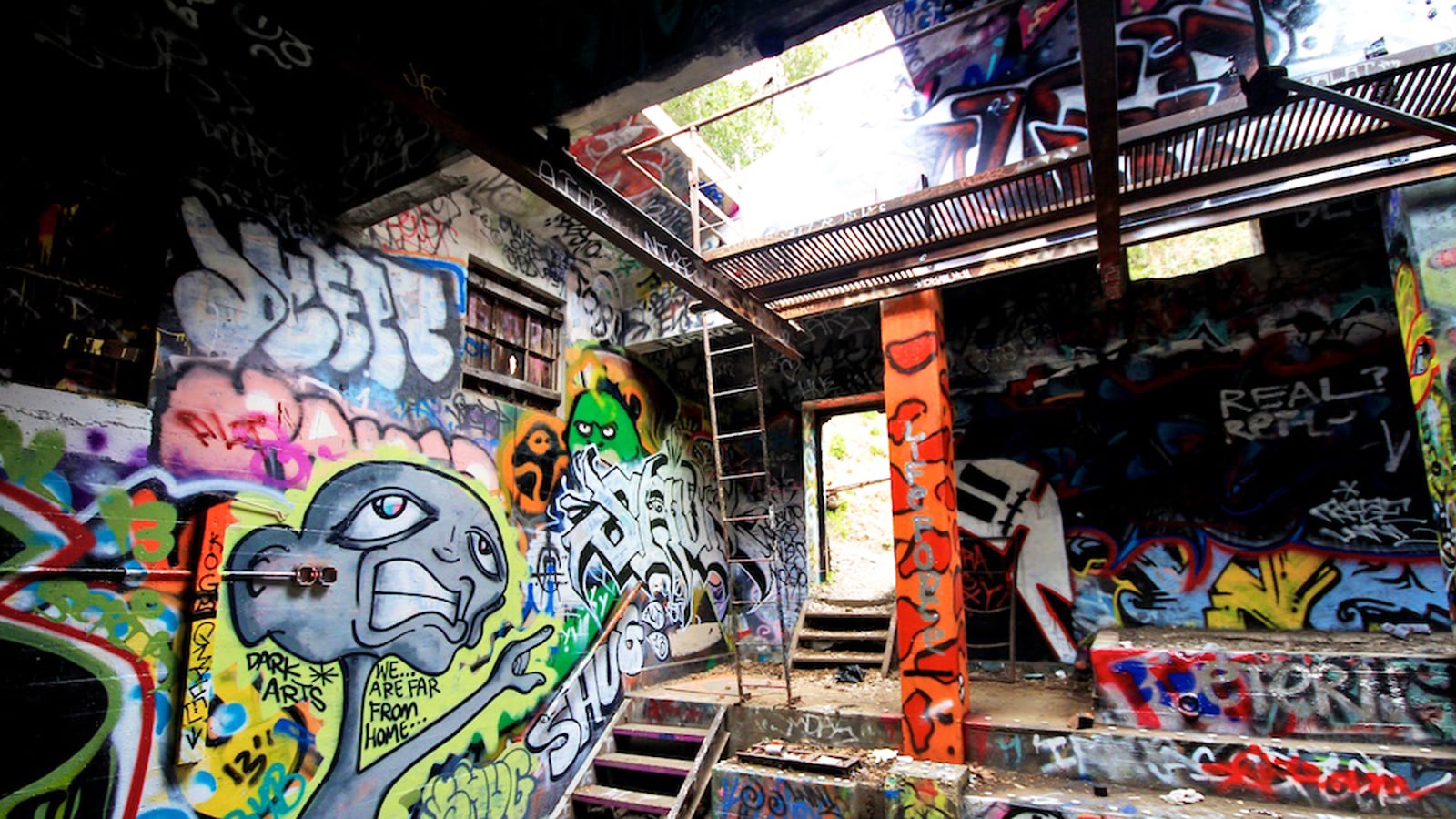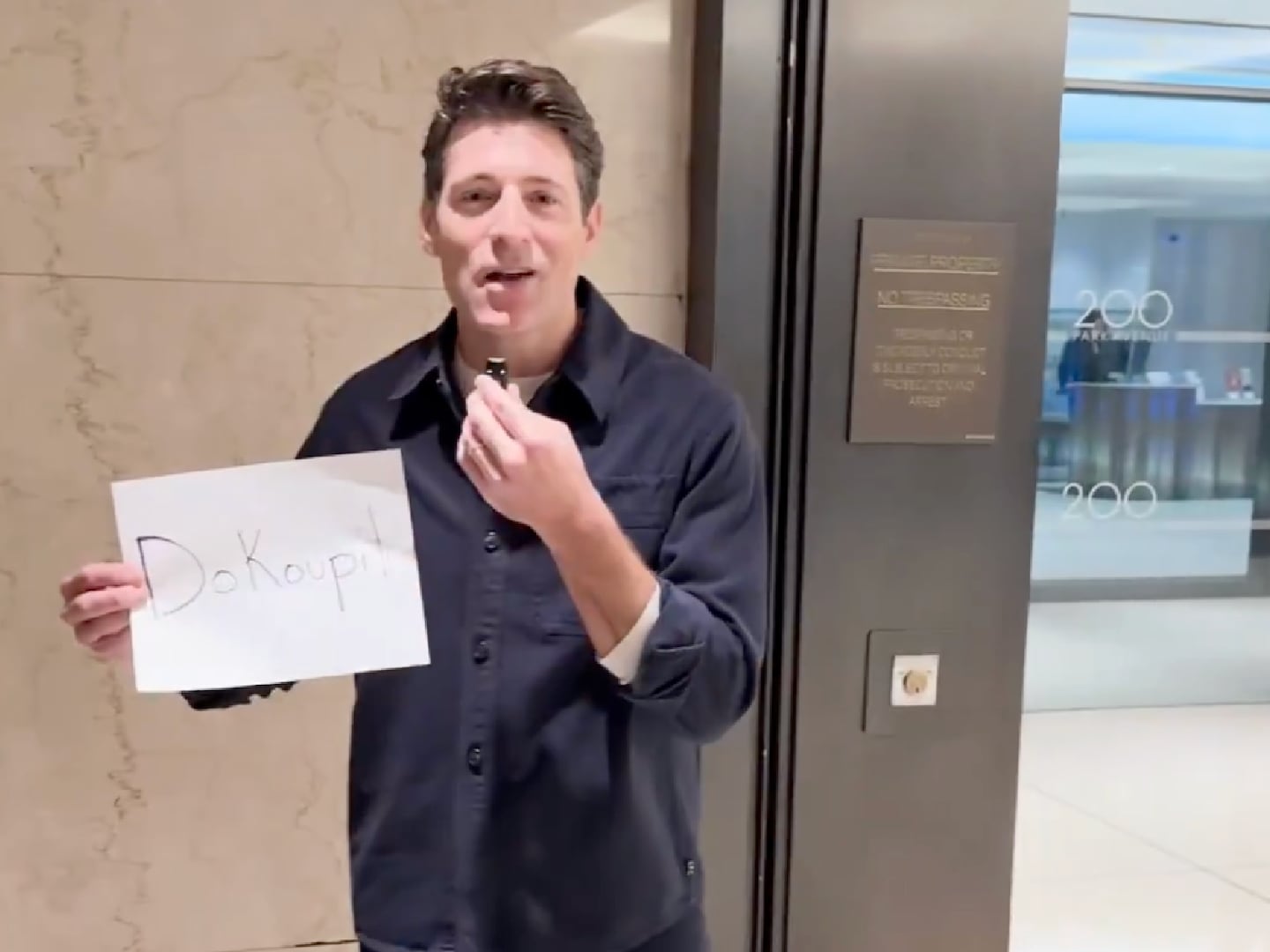LOS ANGELES— Tucked into the Santa Monica Mountains overlooking the Pacific, just past the McMansions of the Pacific Palisades, lie the decaying, graffiti-plastered remains of what is believed to have been a 1930s compound for Nazis in Los Angeles.
A few years ago, I first hiked out to Murphy Ranch, the abandoned compound, after hearing about it (ironically) from an Israeli friend who was obsessed with L.A.’s weird side. After returning a couple of times, I went again this summer because the city of Los Angeles, which owns the land, announced this past spring it was tearing down some of the structures.
After parking the car alongside the neatly manicured lawns off Capri Drive in the Palisades and beginning the walk along the road that hugs the dusty mountainside, past the mega-mansions being built into the hillside and a semi-buried pickup truck, I eventually came to what used to be the entrance to the ruins.
A few years ago an ominous set of black gates with crumbling flagstone walls—now torn down—marked the entrance to the site. Now a person just has to hope they go the right way, following the path until they find the first of the ruins’ famed sights—the 500-odd concrete steps leading down a terraced landscape to the compound.
In 1933, the property that now makes up the ranch was bought by one Jessie M. Murphy. This name is believed to be a front, historian and head of the Palisades Historical Society Thomas R. Young told the Los Angeles Times. (Young did not respond to Daily Beast requests for an interview.) The property was really bought, he says, by the heiress Winona Stephens and her husband, Norman, while under the influence of a German who claimed to have supernatural abilities—Herr Schmidt.
Under his influence, Young told the Times, the Stephenses sunk roughly $4 million into the property. Herr Schmidt had convinced them that Adolf Hitler was going to take over the world and that the U.S. was going to collapse, so Nazi sympathizers needed a stronghold for when it was time to emerge and take control.

While it is believed the couple ran out of funds before they could build their planned four-story mansion (designed by, no joke, the famed African-American architect Paul Williams, whom they hired to replace another famed architect, Welton Becket), the $4 million they did spend resulted in a terraced mountainside for agriculture, a sprinkler system, a 20,000-gallon fuel tank, a power station that could support a small town, a 395,000-gallon concrete water tank, and of course, those long concrete stairs.
The concrete stairs (there are actually multiple sets) lead down to the famed power station of Murphy Ranch. Before it was filled in this spring, the remains of the concrete water tank were set 30 feet in the ground and filled with magnificent graffiti, but unfortunately the city got sick of rescuing trapped graffiti artists and it was filled in this year.
But the pièce de résistance of the ruins was always the power station.
“It sucks, it just sucks,” lamented Jaleel Sampay, a 24-year-old amateur photographer exploring the site with his friends when I returned this summer. “It’s kind of sad. When I was here last time I was able to go inside.”
The power station was boarded up this spring, and while its graffitied shell is still a sight to behold and is usually surrounded by photographers trying to capture the ultimate ruin porn, its interior was jaw-dropping.
Pieces from a broken mirror lined part of the floor, reflecting and refracting the kaleidoscopic array of graffiti adorning the walls. Inside, each time I went, young Los Angelenos would be hanging out, playing music, the air pungent with pot. Some reclined on the multi-level platform at the back of the station, perfect for the Instagram photo-op. A doorway out the back led to an area with higher ground, providing easy access to climb on the roof. In all likelihood, the current boarding up of the windows is unlikely to be much of a deterrent for long. And further down the path, the fence surrounding what resembles the decaying remains of a stable has already been cut and one can get inside.
It makes sense that Herr Schmidt did attract a following in the area. The now-deceased California historian Gloria Ricci Lothrop told the Los Angeles Times that the region was a hotbed of activity for Nazi sympathizers. The Silver Shirts, an underground fascist organization, which had a nationwide membership of between 15,000 and 50,000, had a handful of chapters in the greater Los Angeles region.
But the Germanic takeover was not to be, and Schmidt's dreams came to an early end the day after Pearl Harbor in 1941, when federal agents raided the compound. Schmidt, Young told the Times, was arrested as a spy. The Stephenses remained on the compound until it was sold in 1948 to the Huntington Hartford Foundation, which turned the land into an artists’ colony. Hartford had Lloyd Wright build cottages on the land, which housed everybody from Edward Hopper to Arnold Schoenberg. From there it eventually ended up under the purview of the Los Angeles Department of Parks and Recreation (which did not return a request for comment) where, luckily for us, it has mostly languished.
While some may find it distasteful that the remains of a Nazi utopia still sit in the hills overlooking Los Angeles, I’ve always found something reassuring about watching stoners and Mother Nature take over and slowly destroy a comically inept real-life attempt at The Plot Against America.






